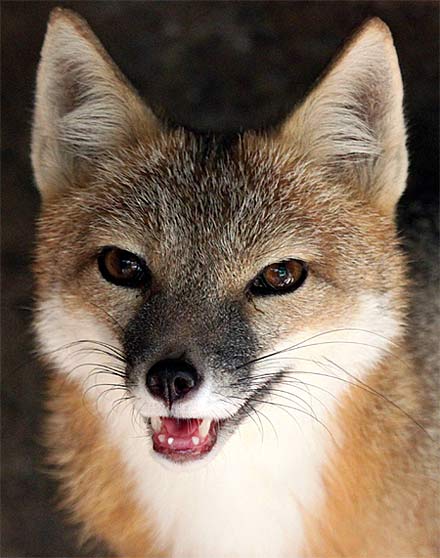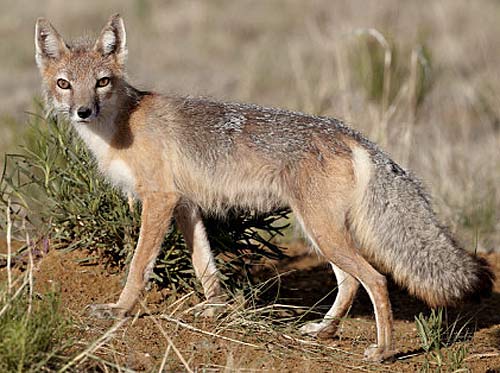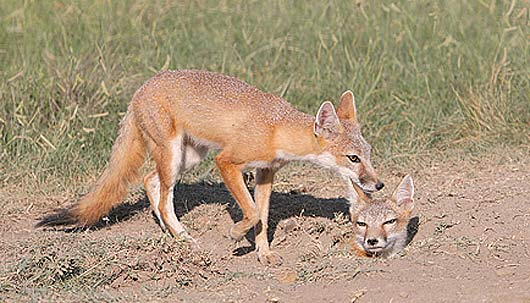Swift Fox – Nighttime Prairie Hunter

The swift fox is well suited to the high plains of North America where it roams its range. Here the golden fields cloak the grey, orange, and white-colored fox. Its name accurately describes its locomotive abilities: in the flat, open terrain it can outrun all but the fastest predators. Small mammals of the prairies such as rabbits, rats, mice, and squirrels make up most of this night hunter’s diet. It also eats birds, insects, lizards, and vegetation.

The swift fox resembles the kit fox in size and weight, as well as general body characteristics except that the swift fox has a slightly broader skull and does not have the trademark big ears that the kit fox needs in its desert terrain. Some scientists do consider both foxes the same species. In western Texas and eastern New Mexico there is a small area where the ranges of the two species overlap, and the two species can interbreed. The swift fox does sometimes leave the prairies for the desert. For the most part however, the swift fox sticks to its grassland habitat from Texas northward into Canada and the kit fox sticks to its desert.
In the early 20th century, the species population declined drastically. The agile canid often took the poisoned bait intended to control the populations of other animals like its larger canid relatives the coyote and the wolf. The coyote itself is not a very nice relative as it will sometimes prey upon the fox. Also, the conversion of the prairie to cropland destroyed much of the fox’s habitat. The species is protected in some US states and has been reintroduced in Canada but the population count is not known exactly.

Breeding season for the foxes is from December to February. Two to seven young will be born in a litter and the pups emerge from their underground den at three weeks. Both parents begin showing them how to play and hunt soon after that. The males enjoy family life and if the female dies, the male will raise the pups alone. The parents may move the family frequently from den to den as they look for prey. The pups will stick around learning the basics of fox life with their parents until the fall.

